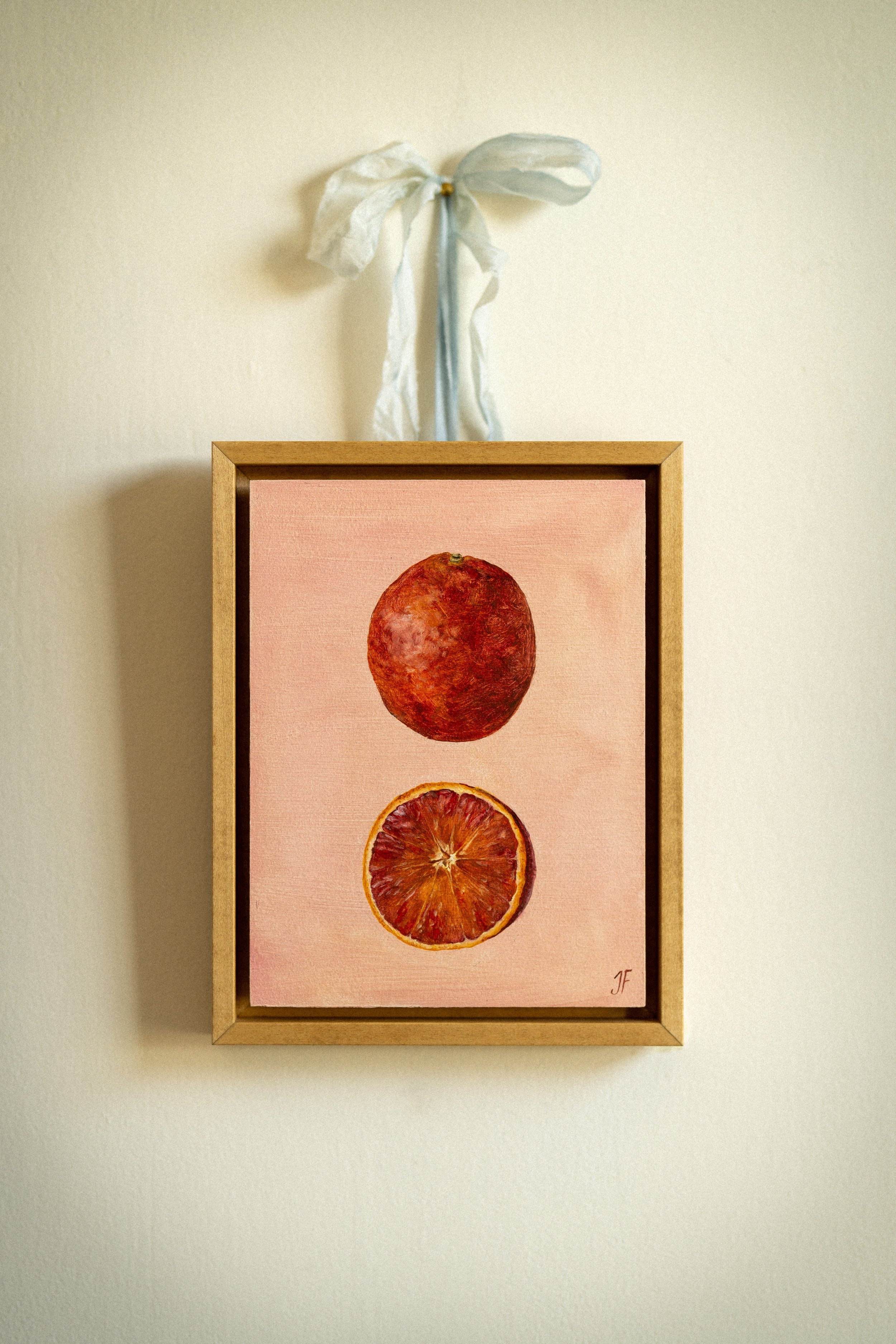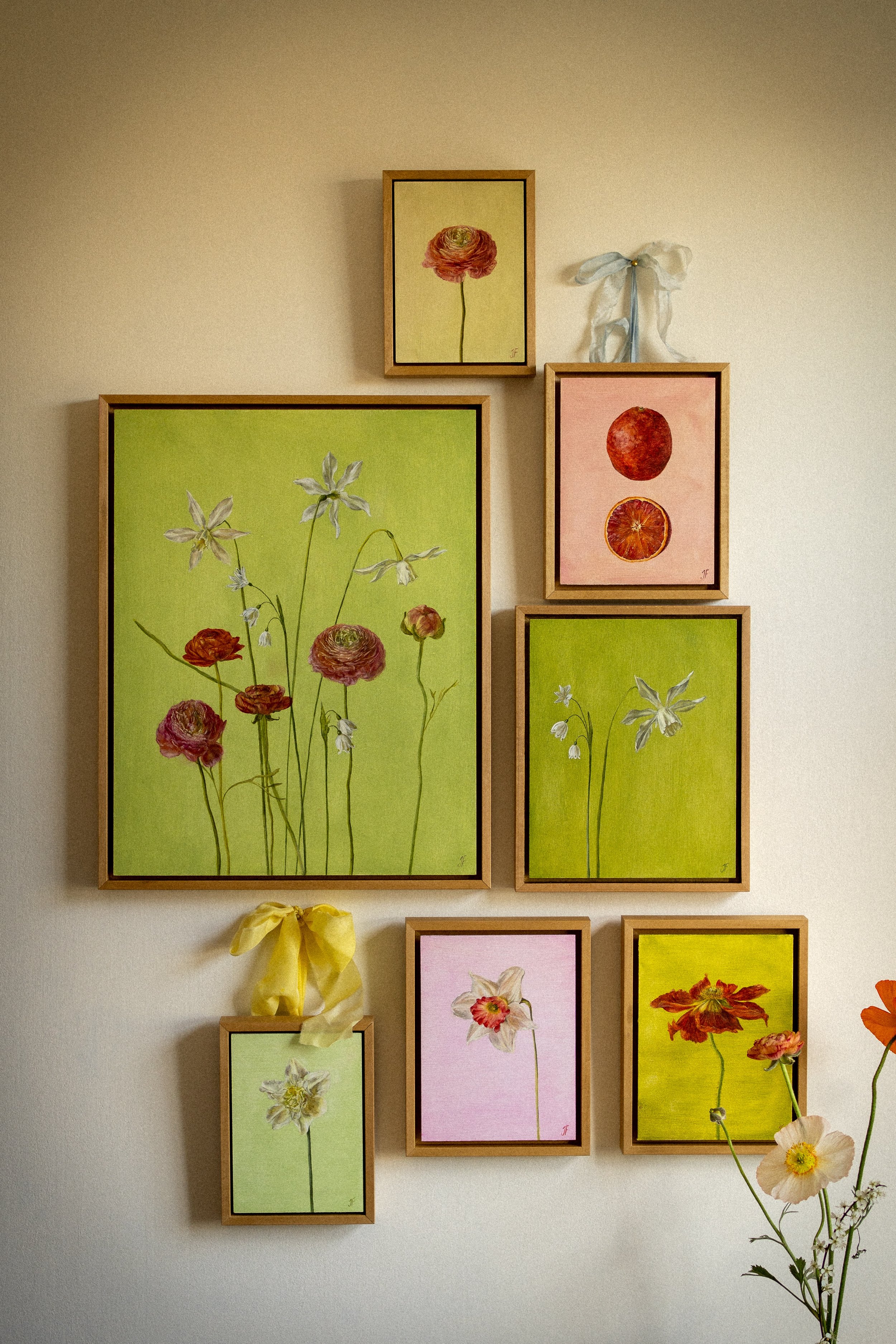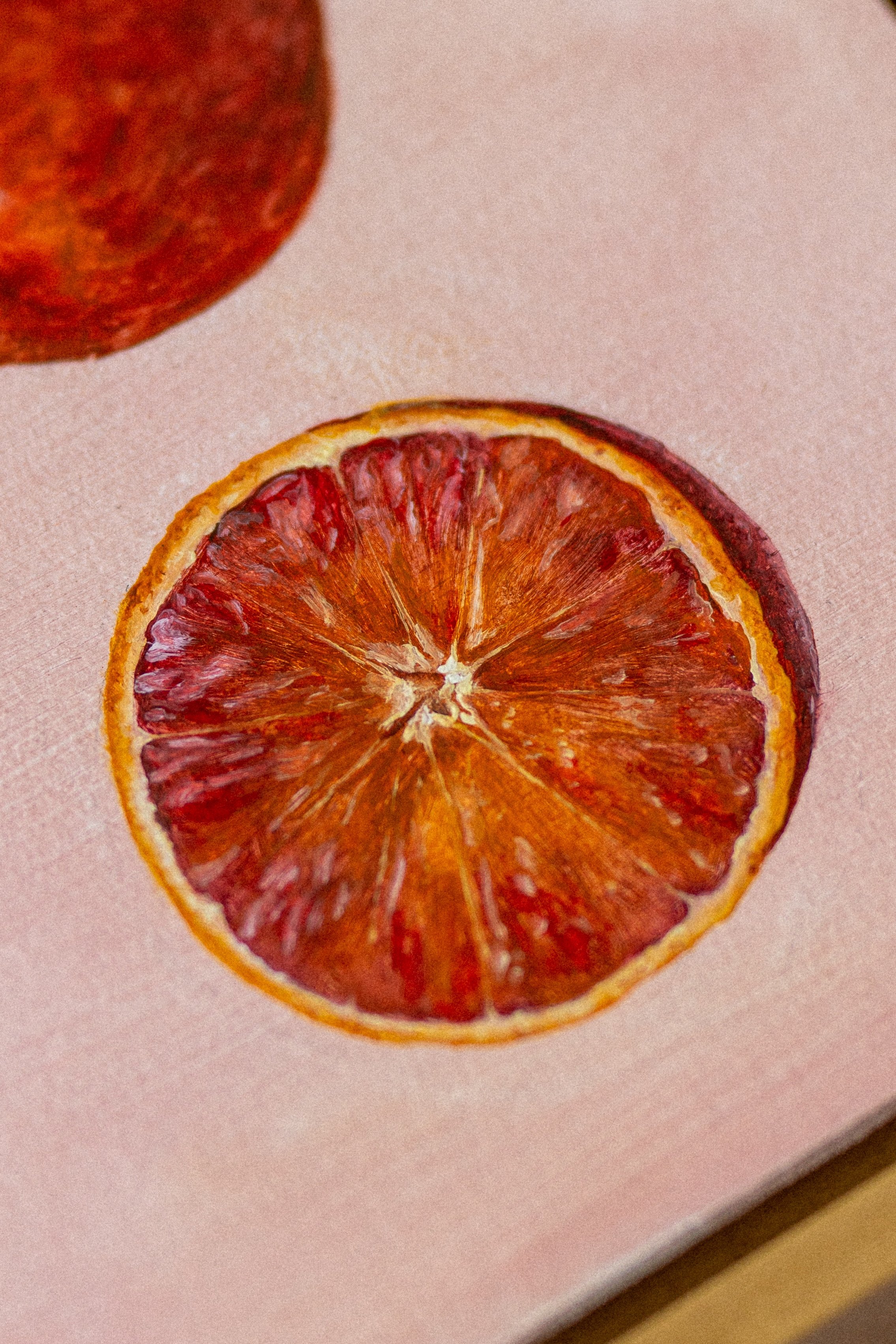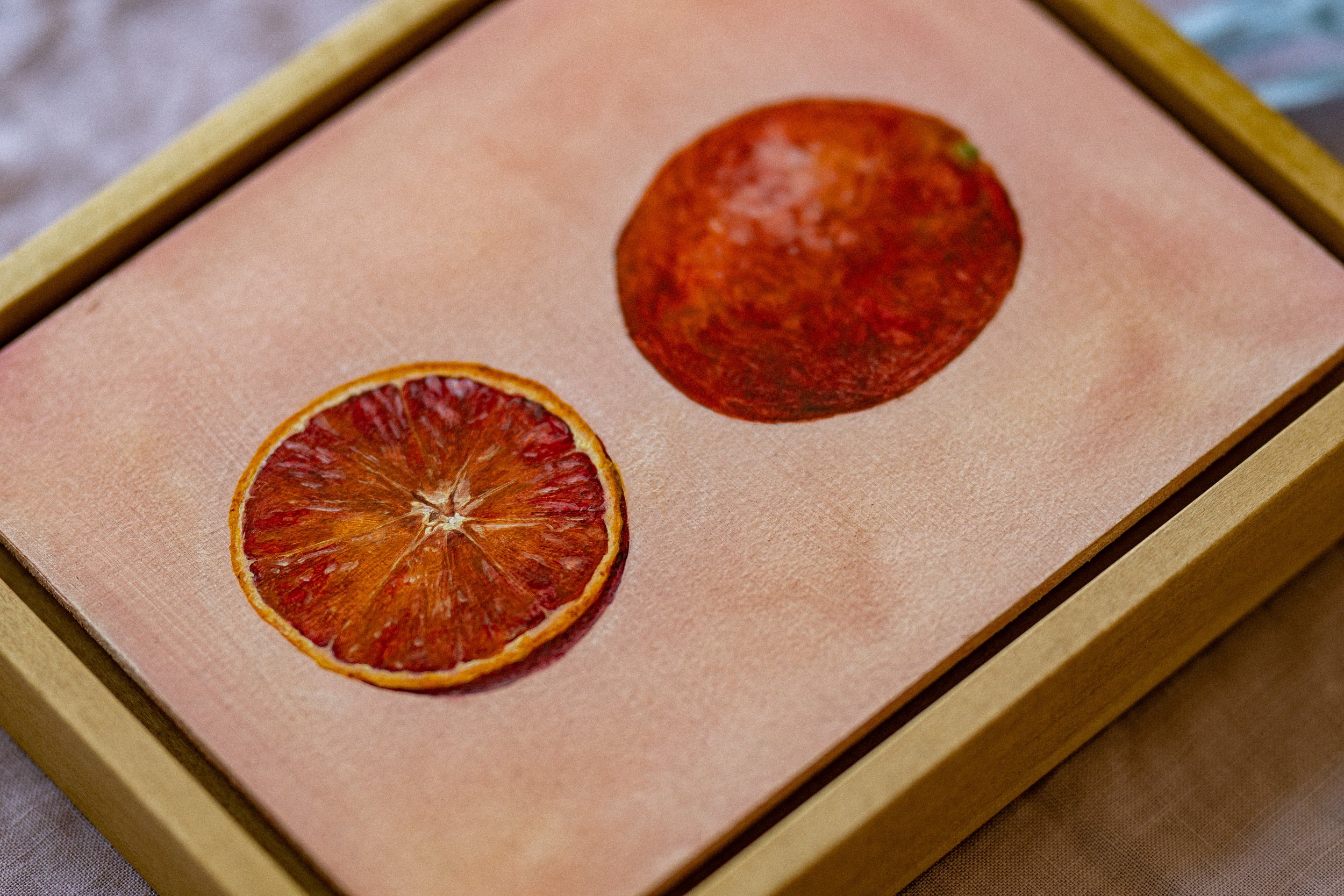



Blood Orange
Sign up to the newsletter to be the first to know when new paintings are released.
This painting is part of a modern day florilegium. The word florilegium originates from the latin ‘gather’ and ‘flower’. At a time when photography was not yet invented, artists recorded newly discovered plants and flowers through paint.
Blood oranges, believed to have originated in the Mediterranean in the 18th century, gain their deep red colour from anthocyanins—a rare trait in citrus—triggered by cool temperatures. This genetic twist not only gives them a striking appearance but also provides unique health benefits and a subtle, berry-like flavour.
Hung with a botanically dyed silk ribbon
Framed original oil painting on wooden panel
Painting size: 6 × 8 inches
Housed in a handmade frame with a subtle antique wax
Blood Orange
Sign up to the newsletter to be the first to know when new paintings are released.
This painting is part of a modern day florilegium. The word florilegium originates from the latin ‘gather’ and ‘flower’. At a time when photography was not yet invented, artists recorded newly discovered plants and flowers through paint.
Blood oranges, believed to have originated in the Mediterranean in the 18th century, gain their deep red colour from anthocyanins—a rare trait in citrus—triggered by cool temperatures. This genetic twist not only gives them a striking appearance but also provides unique health benefits and a subtle, berry-like flavour.
Hung with a botanically dyed silk ribbon
Framed original oil painting on wooden panel
Painting size: 6 × 8 inches
Housed in a handmade frame with a subtle antique wax
To care for your framed original oil painting, keep it in a stable environment away from direct sunlight, heat sources, and high humidity to prevent damage. Gently dust the frame and painting surface with a soft, dry cloth as needed. Your artwork will remain beautiful for years to come, wherever you choose to display it.